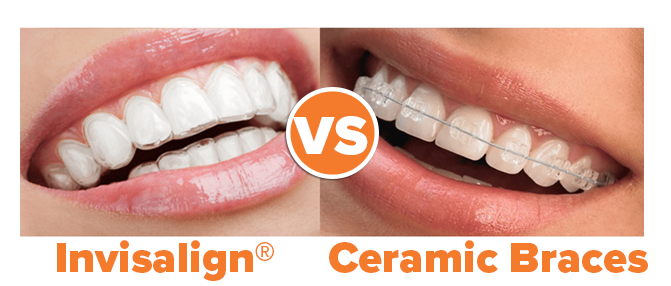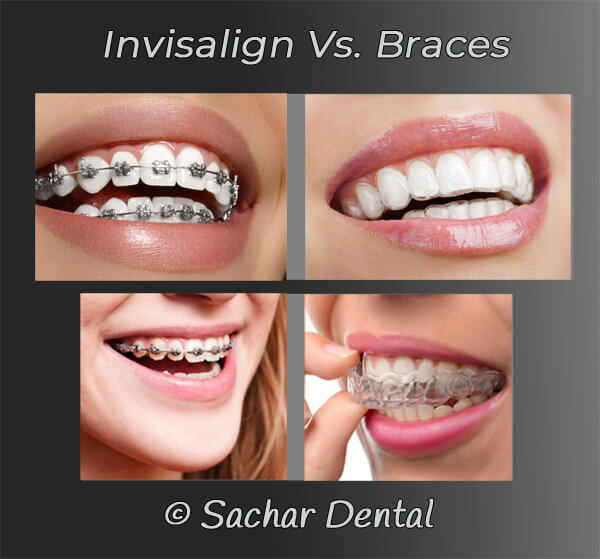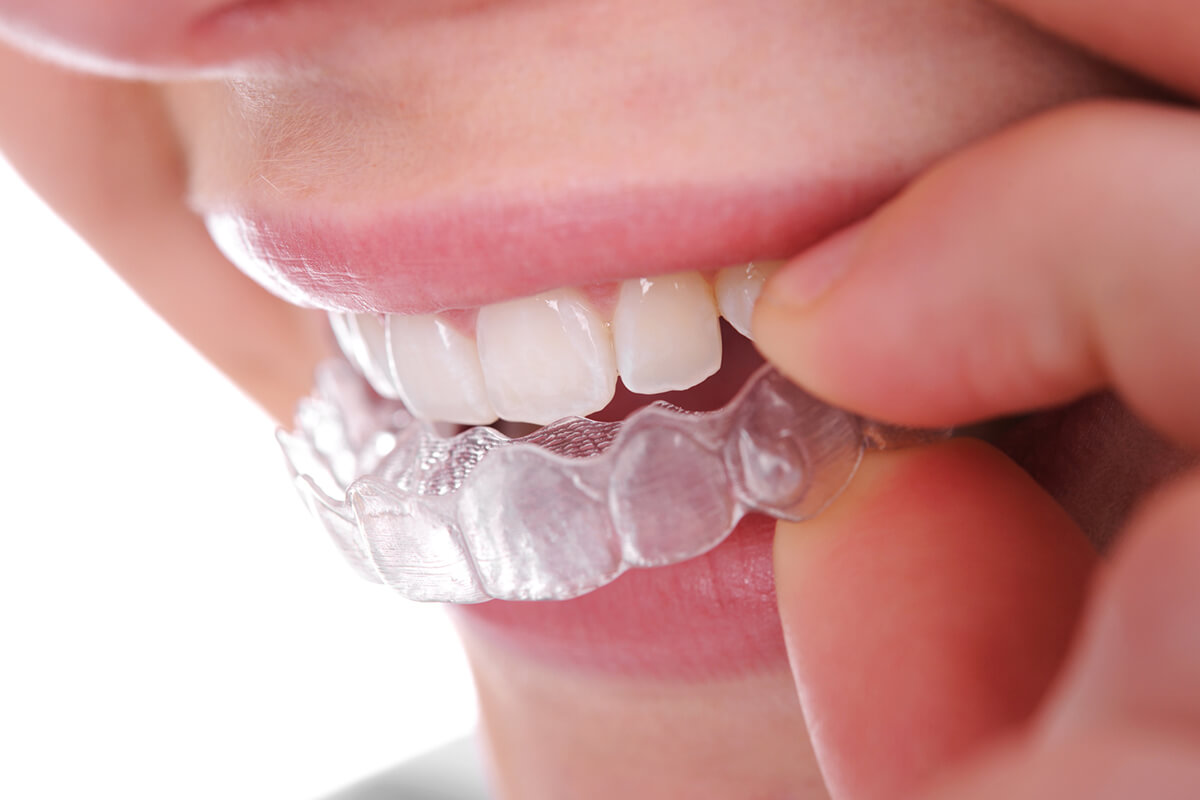Maintaining Oral Health While Using Invisalign: Tips for a Smooth Experience
Maintaining Oral Health While Using Invisalign: Tips for a Smooth Experience
Blog Article
Invisalign vs. Typical Braces: Which Option Is Right for You?
When thinking about orthodontic therapy, the option in between Invisalign and standard dental braces provides a number of vital factors that warrant careful assessment. Invisalign supplies a discreet choice with detachable aligners, while traditional braces provide an extra noticeable yet reliable remedy for serious misalignment.
Introduction of Therapy Options

On the other hand, conventional dental braces contain metal braces and cables that are bound to the teeth. This approach applies continual pressure gradually to achieve positioning. While reliable for complex orthodontic problems, standard dental braces need routine sees for adjustments and can pose difficulties in preserving oral health due to the difficulty of cleansing around braces and cords.
Both options have their advantages, and the option commonly rests on particular dental conditions, way of life preferences, and person conformity. Inevitably, seeking advice from an orthodontic specialist is crucial for figuring out the most appropriate therapy plan customized to private demands. Understanding the nuances of each choice can substantially influence the overall success of orthodontic therapy.
Aesthetic Factors To Consider
A significant aspect affecting the option in between Invisalign and traditional dental braces is the visual charm each therapy offers. Invisalign aligners are crafted from clear plastic, making them practically unnoticeable when put on. This discreet look is especially attracting grownups and teens who may really feel self-conscious about their orthodontic therapy. The capability to keep an all-natural smile throughout the positioning process can dramatically improve the person's self-confidence in social and expert setups.
On the other hand, conventional braces contain steel braces and cords, which can be a lot more recognizable. While improvements in orthodontic technology have led to the advancement of smaller brackets and colored elastics, conventional dental braces still preserve a more conspicuous profile. For some individuals, the visibility of dental braces may hinder them from looking for essential therapy.
Eventually, the option in between Invisalign and standard braces may rest on personal preferences relating to appearances. Clients that prioritize discretion often lean toward Invisalign, while those that are much less concerned concerning exposure may go with traditional braces. Understanding the aesthetic effects of each alternative is crucial for making a notified choice that lines up with one's way of life and preferences.
Comfort and Convenience

In terms of benefit, Invisalign aligners are removable, allowing clients to enjoy their favorite foods without limitation and maintain optimal dental hygiene. Cleaning and flossing are streamlined, as the aligners can be secured throughout these regimens, whereas conventional dental braces call for careful maneuvering around braces and cords.
In addition, Invisalign's progressive system enables fewer orthodontic visits. Individuals generally receive several sets of aligners simultaneously, which can enhance the therapy process and decrease time invested in the orthodontist's chair. In contrast, standard dental other braces require routine changes, making them much less hassle-free for those with active routines. Invisalign. Generally, the convenience and ease of Invisalign make it an attractive selection for lots of individuals seeking orthodontic treatment.
Therapy Period and Performance
While both Invisalign and typical braces are efficient in correcting dental misalignments, the duration of treatment can differ significantly between the 2 alternatives. Typically, Invisalign treatment can take anywhere from 12 to 18 months, relying on the complexity of the instance. The clear aligners function by progressively changing teeth into their wanted placements, and routine follow-ups with an orthodontist assistance make sure development stays on course.
In comparison, typical braces typically call for a longer commitment, generally varying from 18 months to 3 years. This results from their fixed nature and the use of brackets and cords, which can be extra efficient for complex instances and severe imbalances (Invisalign). The treatment performance of traditional dental braces is well-documented, as they permit accurate adjustments and greater control over tooth activity
Eventually, the selection in between Invisalign and traditional braces may rest on both the expected treatment period and the certain dental issues available. Consulting with an orthodontist is vital, as they can give tailored referrals based upon private needs, making sure the picked technique aligns with wanted durations and end results.
Expense Comparison and Insurance Policy Choices
Expense plays a considerable duty in check my blog the decision-making process for people thinking about orthodontic treatment, whether choosing Invisalign or conventional dental braces. Typically, the cost of Invisalign varieties from $3,000 to $8,000, while conventional braces normally set you back in between $2,000 and $6,000. Factors affecting these expenses include the complexity of the instance, the duration of therapy, and geographical area.
Insurance policy protection can substantially impact out-of-pocket expenditures. Many oral insurance policy plans offer partial insurance coverage for orthodontic treatments, but the specifics can vary commonly. It is crucial for individuals to examine their insurance coverage plans to figure out the level of insurance coverage for either choice. Normally, conventional braces might be a lot more frequently covered by insurance coverage plans compared to Invisalign, which some insurers categorize as an aesthetic treatment.
In addition, several orthodontic practices supply flexible layaway plan, making both therapy choices a lot more available. Individuals should make inquiries regarding possible funding choices and discount rates for in advance settlements. Assessing the complete price, including insurance advantages and repayment plans, is vital for making an informed decision that lines up with both aesthetic preferences and budget considerations.

Final Thought
In summary, the option in between this post Invisalign and standard dental braces depends upon numerous variables, consisting of visual choices, convenience, therapy duration, and cost. Invisalign offers a very discreet, removable alternative that facilitates oral hygiene and nutritional adaptability, while conventional braces may be preferable for intricate dental problems and frequently come at a reduced price point. Eventually, appointment with an orthodontist is important to examine private conditions and establish one of the most proper therapy alternative for achieving ideal dental placement.
When considering orthodontic therapy, the selection in between Invisalign and typical dental braces offers several crucial factors that merit careful assessment.Contrasting Invisalign and traditional braces exposes unique therapy options for orthodontic improvement.While both Invisalign and traditional dental braces are efficient in correcting dental imbalances, the duration of therapy can vary substantially between the 2 alternatives.Price plays a significant role in the decision-making procedure for people thinking about orthodontic treatment, whether opting for Invisalign or conventional braces.In summary, the selection in between Invisalign and traditional dental braces pivots on numerous variables, including aesthetic choices, convenience, therapy period, and cost.
Report this page